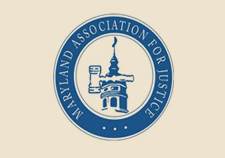When we are ill and prescribed a medication, we expect that our doctors will prescribe the right one – and we trust our pharmacists to fill that prescription correctly. But a new report out of NBC New York finds that “an estimated 30 to 50 million prescriptions are filled incorrectly each year,” which amounts to “about 2 percent of all the 4 billion prescriptions filled annually.”
Why are so many prescription errors made each year? There are a number of possible reasons:
- Pharmacist error. Misreading a prescription, or not double-checking for typographical errors could lead a patient to receive double the dosage.
- Illegible handwriting. The old joke about doctors having terrible handwriting can be deadly if the pharmacist cannot understand the instructions, or if the doctor’s scrawl looks like one medication when it is really another. In fairness, however, illegible handwriting should force a pharmacist to ask for clarification, so both the doctor and the pharmacist might be at fault if the script is messy.
- Malfunctioning software. More and more states are making the switch to electronic prescriptions, or e-scripts. If the software malfunctions, a patient’s prescription could be affected.
- Inadequate training. Pharmacists must undergo years of schooling to get their degrees – but anyone can make a mistake when they do not have a lot of practical experience. Poor training methods or standards of practice can increase the chances of newer, less experienced pharmacy techs making a mistake.
- Defective drugs. Drugs that have not been properly labeled for potential side effects, or are marketed for off-label uses, could have tragic consequences if prescribed incorrectly.
- The drugs were imported. Even though the federal government regulates the import of drugs and has declared it illegal to import them from other countries for individual use, many people still seek prescriptions online from less expensive places. These companies may not be reputable, and you risk taking the wrong drug entirely by using such services.
One way we can help decrease the number of pharmacy errors is to mandate that all errors be reported. Currently, there is no federal law on the books that requires pharmacies to report their errors. If we demand the information we need to hold pharmacies accountable for their errors, we can help make Maryland a safer place for patients.
To learn more about pharmacy errors, or to see our complete list of medical malpractice services, please visit Plaxen & Adler, P.A.





